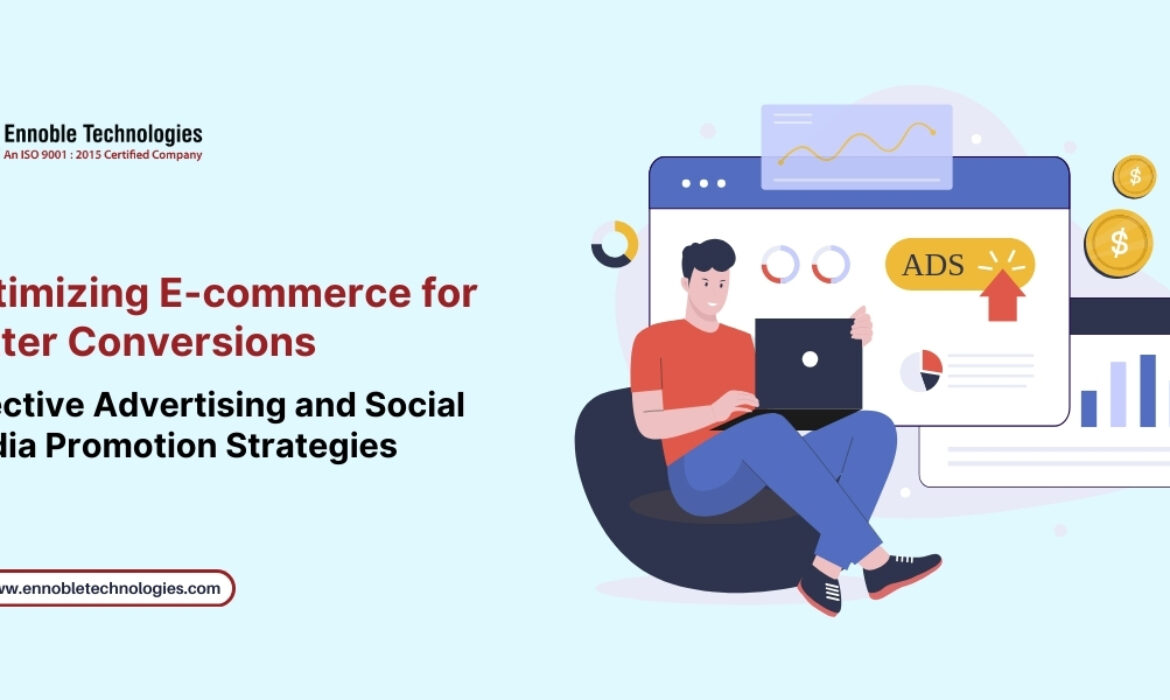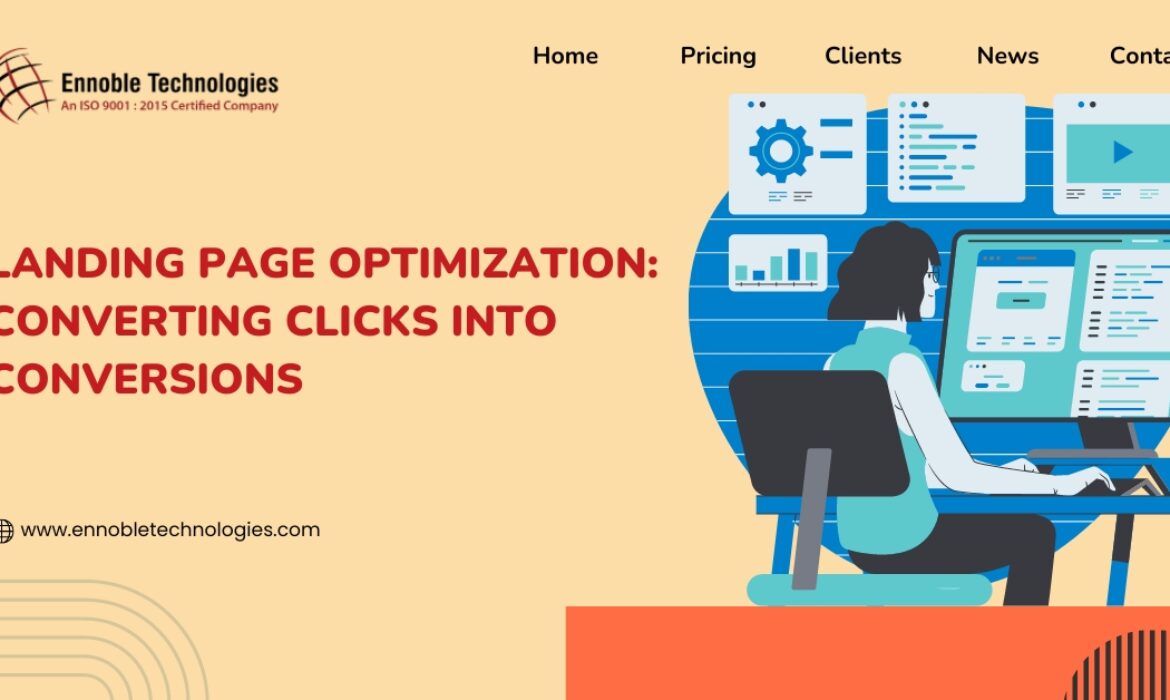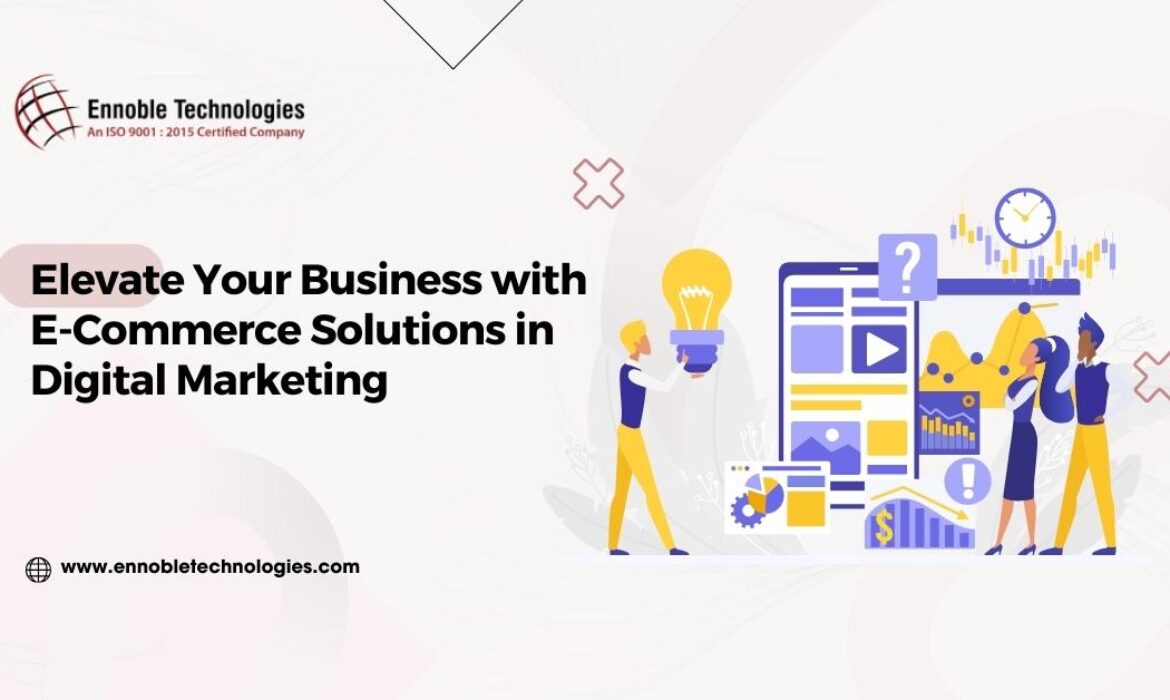Optimizing E-commerce for Better Conversions: Effective Advertising and Social Media Promotion Strategies
In the fast-paced world of e-commerce, businesses constantly strive to enhance their online presence and boost sales. Optimizing e-commerce for better conversions is essential for driving growth and ensuring long-term success. This comprehensive guide will delve into e-commerce conversion optimization, effective e-commerce advertising, and social media promotion strategies for e-commerce. We’ll explore various tactics and techniques to help you increase e-commerce sales and improve overall performance. And, of course, Ennoble Technologies will be highlighted as a key player in providing these invaluable services.
Understanding E-commerce Conversion Optimization
E-commerce conversion optimization is the process of improving your online store to increase the percentage of visitors who complete a desired action, such as making a purchase. Optimizing e-commerce for better conversions involves analyzing user behavior, identifying barriers to conversion, and implementing changes to enhance the user experience.
Key Tactics for E-commerce Conversion Optimization
- Improve Website Navigation: A well-structured and easy-to-navigate website is crucial for keeping visitors engaged. Simplify the menu structure, use clear headings, and provide a search bar to help users find products quickly.
- Optimize Product Pages: High-quality images, detailed product descriptions, and customer reviews can significantly influence purchasing decisions. Ensure your product pages are informative and visually appealing.
- Streamline Checkout Process: A complicated checkout process can lead to cart abandonment. Simplify the checkout process by minimizing the number of steps, offering guest checkout options, and providing multiple payment methods.
- Implement A/B Testing: A/B testing allows you to compare different versions of a webpage to see which one performs better. Test various elements such as headlines, images, and call-to-action buttons to identify the most effective combinations.
Effective E-commerce Advertising Techniques

Advertising is a powerful tool for driving traffic and increasing e-commerce sales. Effective e-commerce advertising involves using various platforms and techniques to reach your target audience and promote your products.
Types of E-commerce Advertising
- Pay-Per-Click (PPC) Advertising: PPC campaigns allow you to bid on keywords and display ads to users who search for those terms. This form of digital advertising for e-commerce is highly targeted and can deliver immediate results.
- Display Advertising: Display ads appear on websites within the Google Display Network. These ads can be in the form of banners, images, or videos, and they help increase brand visibility and attract potential customers.
- Social Media Advertising: Platforms like Facebook, Instagram, and Pinterest offer powerful advertising tools to reach a wide audience. Social media marketing for online stores involves creating engaging ads that resonate with your target demographic.
- Retargeting Ads: Retargeting ads are shown to users who have previously visited your website but did not make a purchase. These ads remind them of your products and encourage them to return and complete their purchase.
Best Practices for Effective E-commerce Advertising
- Target the Right Audience: Use demographic data, interests, and behavior to define your target audience. The more precise your targeting, the more effective your ads will be.
- Create Compelling Ad Copy: Your ad copy should be clear, concise, and persuasive. Highlight the unique selling points of your products and include a strong call to action.
- Use High-Quality Visuals: Eye-catching images and videos can significantly improve the performance of your ads. Ensure that your visuals are high quality and relevant to the products you’re promoting.
- Monitor and Adjust Campaigns: Regularly review the performance of your ad campaigns and make adjustments as needed. This could involve changing your targeting parameters, tweaking ad copy, or adjusting your budget.
Social Media Promotion Strategies for E-commerce
Social media is a powerful tool for promoting your e-commerce business and engaging with customers. Social media promotion strategies for e-commerce involve creating and sharing content that attracts and retains a loyal audience.

Key Social Media Promotion Strategies
- Create Engaging Content: Share a mix of content, including product highlights, behind-the-scenes glimpses, customer testimonials, and educational posts. Use high-quality images and videos to capture attention.
- Leverage Influencer Marketing: Partner with influencers in your niche to reach a broader audience. Influencers can help promote your products authentically and drive traffic to your online store.
- Run Social Media Contests and Giveaways: Contests and giveaways are effective ways to increase engagement and attract new followers. Encourage participants to share your content and tag friends to broaden your reach.
- Utilize Paid Social Media Advertising: Use paid advertising options on platforms like Facebook and Instagram to target specific demographics and drive traffic to your website.
- Engage with Your Audience: Respond to comments, messages, and reviews promptly. Engaging with your audience helps build trust and fosters a sense of community around your brand.
How Ennoble Technologies Can Help
Ennoble Technologies specializes in providing e-commerce marketing strategies that drive results. From e-commerce conversion optimization to effective e-commerce advertising and social media marketing for online stores, Ennoble Technologies offers a comprehensive suite of services designed to enhance your online presence and boost sales.
Services Offered by Ennoble Technologies
- E-commerce SEO: Ennoble Technologies helps improve your search engine rankings through targeted keyword research, on-page optimization, and link-building strategies. E-commerce SEO services are essential for increasing organic traffic and visibility.
- PPC Campaign Management: Ennoble Technologies creates and manages PPC campaigns that deliver high ROI. By targeting the right keywords and optimizing ad copy, they ensure your ads reach the right audience.
- Social Media Marketing: Ennoble Technologies develops and implements social media promotion strategies for e-commerce that engage your audience and drive traffic. We create compelling content and run targeted ad campaigns on platforms like Facebook and Instagram.
- Conversion Rate Optimization: By analyzing user behavior and conducting A/B testing, Ennoble Technologies helps identify and remove barriers to conversion. Our online store conversion tactics ensure a smooth user experience and higher conversion rates.
- Content Marketing: Ennoble Technologies creates high-quality content that resonates with your audience. From blog posts and articles to videos and infographics, our content marketing strategies enhance engagement and drive traffic.
On a final note:
Optimizing e-commerce for better conversions requires a multifaceted approach that includes e-commerce conversion optimization, effective e-commerce advertising, and social media promotion strategies for e-commerce. By implementing these tactics and leveraging the expertise of Ennoble Technologies, you can increase e-commerce sales, improve performance, and achieve sustained growth. Whether you’re looking to enhance your e-commerce advertising techniques, boost your social media presence, or implement online store marketing tips, Ennoble Technologies has the tools and knowledge to help you succeed. Embrace these strategies and watch your e-commerce business thrive in the competitive digital landscape.
Read more: https://ennoblegrp.com/e-commerce/e-commerce-solutions/
Landing Page Optimization: Converting Clicks into Conversions
In the vast landscape of the internet, your website’s landing page is your digital storefront. It’s the first point of contact for potential customers and can make or break your online success. While getting clicks is essential, converting those clicks into meaningful actions is the true goal. This article will delve deep into the world of landing page optimization, providing you with valuable insights and strategies to turn those clicks into conversions.
The Significance of Landing Page Optimization
Before we dive into the nitty-gritty details of optimizing your landing page, let’s establish why it’s so crucial in the first place. Your landing page serves as a bridge between your marketing efforts and actual conversions. Whether your goal is to sell products, collect leads, or simply convey information, a well-optimized landing page can significantly impact your bottom line.

Understanding Your Audience
To optimize your landing page effectively, you must first understand your audience. Who are the people clicking on your page, and what are their expectations? Are they looking for information, a product, or a service? Knowing your audience’s needs and preferences is the foundation of a successful landing page.
Crafting Compelling Headlines
Your landing page’s headline is often the first thing visitors see, and it’s your chance to make a strong first impression. Use bold and engaging headlines that immediately convey the value proposition. Ensure that your headline directly addresses the problem your product or service solves.
Visual Appeal and User Experience
Once you’ve captured your audience’s attention with a compelling headline, it’s time to focus on the visual appeal and user experience of your landing page.
Clean and Uncluttered Design
A cluttered and confusing landing page is a conversion killer. Keep the design clean and straightforward. Use bold fonts, contrasting colors, and ample white space to make your content easily digestible.
Mobile Responsiveness
In today’s mobile-centric world, a responsive design is non-negotiable. Ensure that your landing page looks and functions flawlessly on all devices, from smartphones to desktops.
Call to Action (CTA)
The heart of any landing page is its call to action. Your CTA should be clear, concise, and compelling.

Use Action-Oriented Language
Words like “Buy Now,” “Sign Up Today,” or “Get Started” instill a sense of urgency and action. Make your CTA impossible to ignore.
Positioning Matters
The placement of your CTA button is critical. It should be prominently displayed, typically above the fold, where visitors don’t have to scroll to find it.
Social Proof and Trust Signals
In an era of online skepticism, trust is a valuable commodity. Utilize social proof and trust signals to reassure visitors that they’re making the right choice by engaging with your landing page.
Customer Reviews and Testimonials
Displaying genuine customer reviews and testimonials can significantly boost your credibility. Ensure that they are prominently featured on your landing page.
Security Badges and Certifications
If your landing page involves sensitive information or transactions, prominently display security badges and certifications to put visitors’ minds at ease.
A/B Testing and Continuous Improvement
Even after you’ve optimized your landing page, the work is not done. Regularly conduct A/B tests to determine what elements are working and what needs improvement.
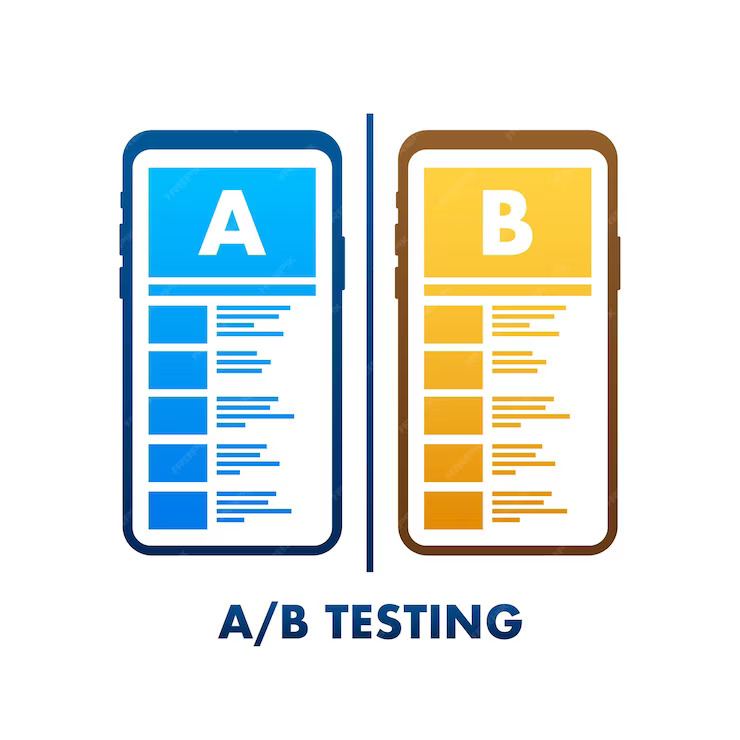
Testing Different Headlines
Try out various headlines to see which one resonates best with your audience. A small change here can lead to a significant increase in conversions.
Analyzing User Behavior
Use analytics tools to track user behavior on your landing page. Identify drop-off points and optimize those areas to keep visitors engaged.
FAQs
Q: How can I make my introduction more engaging?
A: Start with a hook, ask a thought-provoking question, or share a surprising fact. Anything that piques your curiosity can make your introduction engaging.
Q: What’s the best way to evoke emotion in my writing?
A: Use descriptive language, tell relatable stories, and connect with your readers on a personal level. Emotions are often conveyed through experiences and anecdotes.
Q: Should I always use contractions and colloquial language?
A: It depends on your audience and the tone you want to set. Contractions and colloquialisms can make your writing more approachable, but they may not be suitable for all content.
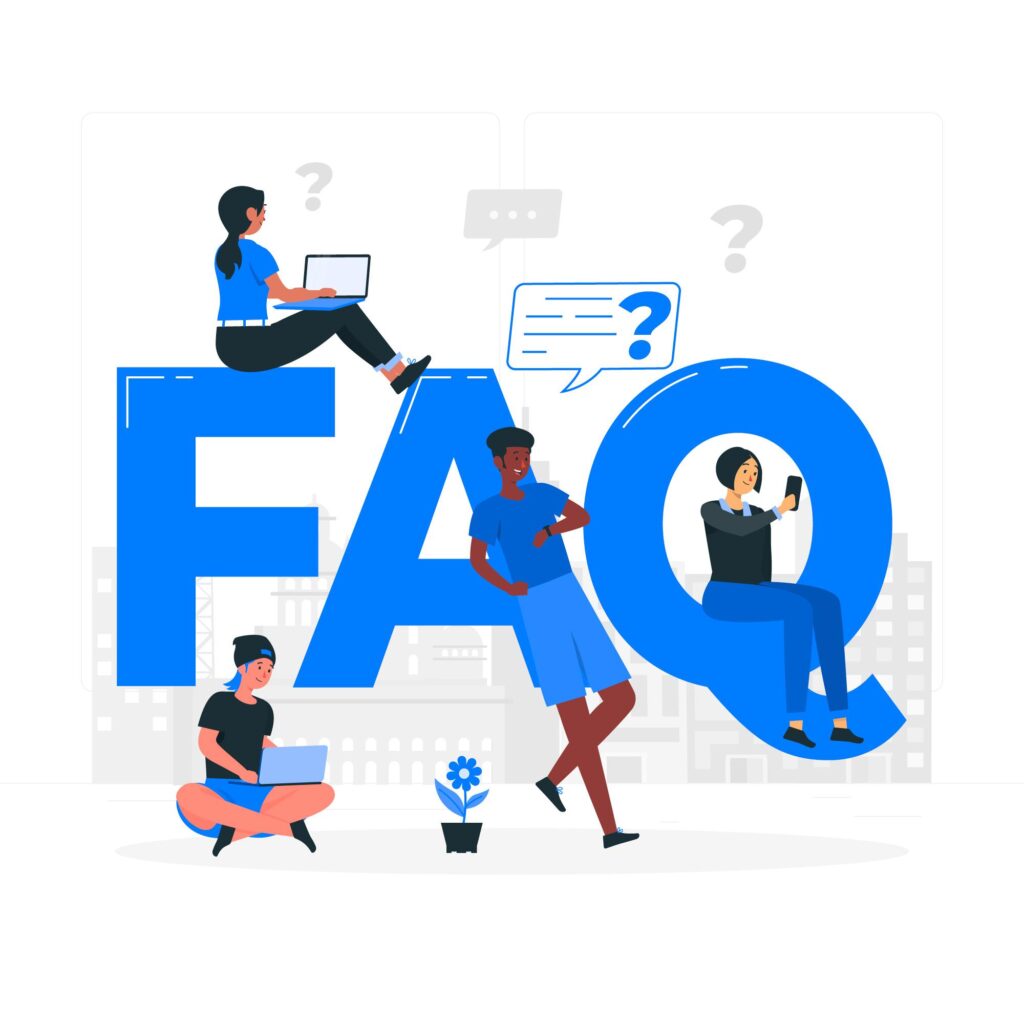
Q: How do I handle writer’s block?
A: Writer’s block can be overcome by taking breaks, changing your environment, brainstorming, or even discussing your ideas with someone else.
Q: Is revision really necessary?
A: Absolutely. Revision is where you refine your content, fix errors, and enhance engagement. It’s a crucial step in the writing process.
Q: Can I use humor to keep readers engaged?
A: Yes, humor can be a great engagement tool. Just ensure it’s appropriate for your audience and aligns with your content.
Conclusion
Crafting engaging content that keeps readers invested from start to finish is an art worth mastering. By implementing the strategies outlined in this article and experimenting with different techniques, you can become a writer who makes their audience say, “Continue writing please.”
Also Read: 10 Reasons Why Paid Advertising is Vital for Digital Marketing Success – Ennoble Technologies
Elevate Your Business with E-Commerce Solutions in Digital Marketing
In the fast-paced world of digital marketing, businesses are constantly seeking innovative ways to reach their target audience and drive growth. E-commerce has emerged as a powerful tool that not only expands the reach of businesses but also enhances customer experience. In this comprehensive guide, we will explore the dynamic realm of e-commerce and how it can elevate your business in the digital marketing landscape.
Understanding E-Commerce
Defining E-Commerce
E-commerce, short for electronic commerce, refers to the buying and selling of goods and services over the internet. It has revolutionized the way businesses operate, enabling them to reach a global audience with the click of a button.
Types of E-Commerce Models
B2B E-Commerce: Business-to-business e-commerce involves transactions between businesses. This model is often characterized by bulk orders and long-term partnerships.
B2C E-Commerce: Business-to-consumer e-commerce focuses on selling products and services directly to individual consumers. It’s the most common e-commerce model.
C2C E-Commerce: Customer-to-customer e-commerce platforms enable individuals to buy and sell products among themselves. Online marketplaces facilitate these transactions.
M-Commerce: Mobile commerce is the subset of e-commerce that occurs on mobile devices, such as smartphones and tablets.

The Evolution of E-Commerce
E-commerce has come a long way from its inception in the 1990s. From basic online catalogs to sophisticated, AI-driven shopping experiences, it continues to evolve, presenting new opportunities and challenges for businesses.
Why E-Commerce is Crucial in Digital Marketing
Expanding Your Reach
E-commerce erases geographical boundaries, allowing your business to reach customers worldwide. With the right digital marketing strategies, your products can find their way to consumers across the globe.
24/7 Availability
Unlike traditional brick-and-mortar stores with fixed operating hours, e-commerce platforms are open 24/7. This accessibility ensures that potential customers can shop at their convenience.
Cost-Effectiveness
Running an e-commerce store is often more cost-effective than maintaining a physical retail space. There are no rent, utilities, or other overheads to worry about.
Personalization and Customer Experience
E-commerce platforms can collect data on customer preferences and behavior. This data can be used to create personalized shopping experiences, making customers feel valued and understood.
Setting Up Your E-Commerce Store
Choosing the Right E-Commerce Platform
Selecting the appropriate e-commerce platform is crucial. Options like Shopify, WooCommerce, and BigCommerce offer varying levels of customization and scalability.
Design and User Experience
A well-designed e-commerce site with a user-friendly interface is more likely to convert visitors into customers. The visual appeal and ease of navigation are vital.
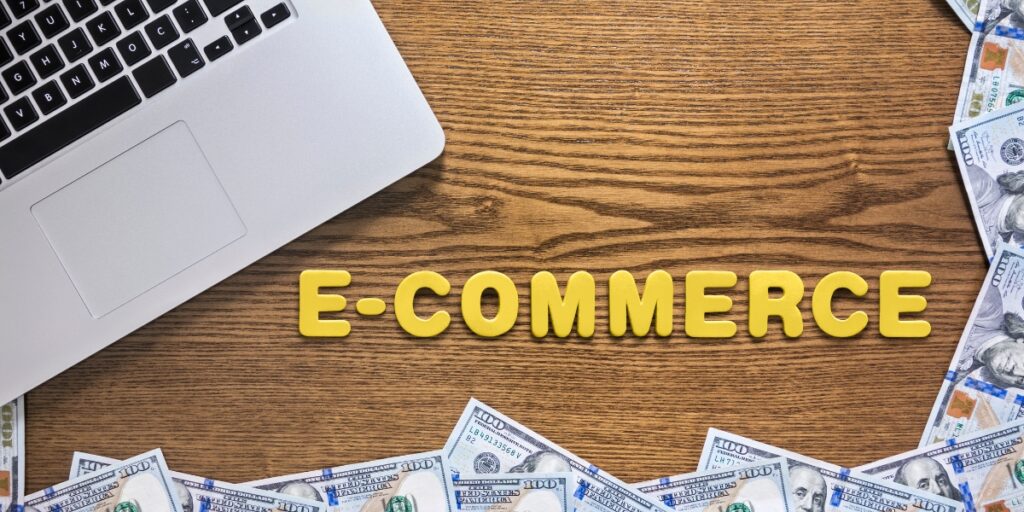
Product Listings and Descriptions
Compelling product listings with high-quality images and detailed descriptions are essential to attract and retain customers.
Payment Gateways and Security
Secure payment gateways and data encryption are paramount to protect both your business and your customers. Trust is a critical factor in e-commerce.
E-Commerce SEO Strategies
The Importance of SEO in E-Commerce
Search engine optimization (SEO) plays a critical role in e-commerce success. It’s the art of optimizing your website to rank higher in search engine results.
Keyword Research for E-Commerce
Thorough keyword research helps identify the terms and phrases potential customers are searching for. These keywords can then be strategically incorporated into your content.
On-Page SEO for E-Commerce
On-page SEO involves optimizing individual pages on your website. This includes optimizing product descriptions, meta tags, and images.
Off-Page SEO for E-Commerce
Off-page SEO focuses on building quality backlinks and promoting your e-commerce site on other websites and platforms.
Technical SEO for E-Commerce
Technical SEO ensures that your website functions smoothly and that search engines can crawl and index it effectively.
Content Marketing for E-Commerce
The Role of Content in E-Commerce
Compelling content can inform, entertain, and persuade customers. It’s a valuable tool for e-commerce businesses to engage their audience.
Blogging for E-Commerce
Maintaining a blog can help drive traffic and establish your brand as an authority in your niche.

Product Descriptions and Content
Detailed and persuasive product descriptions can make the difference between a sale and a lost opportunity.
Email Marketing for E-Commerce
Email marketing is a powerful way to stay connected with customers, promote products, and drive sales.
Social Media Marketing for E-Commerce
Leveraging Social Media Platforms
Social media platforms like Facebook, Instagram, and Twitter provide opportunities to connect with a vast audience.
Paid Advertising on Social Media
Paid advertising on social media can be highly targeted, allowing you to reach the right audience with your e-commerce offerings.
Influencer Marketing in E-Commerce
Collaborating with social media influencers can help boost brand awareness and credibility.
Email Marketing Strategies
Building an Email List
A robust email list is a valuable asset for e-commerce businesses. It’s a direct line of communication with potential customers.
Email Automation
Automating email campaigns can save time and ensure that customers receive timely and relevant messages.

Personalized Email Campaigns
Personalization is key in email marketing. Tailoring messages to individual preferences can significantly impact conversion rates.
Data Analytics in E-Commerce
Importance of Data Analytics
Data analytics provides insights into customer behavior, allowing you to make data-driven decisions.
Tools for E-Commerce Analytics
Various tools and platforms, such as Google Analytics, provide valuable data for e-commerce businesses.
Making Informed Decisions with Data
Interpreting data and turning it into actionable insights is crucial for business growth.
Mobile Optimization for E-Commerce
Mobile-First Approach
A mobile-first approach involves designing your e-commerce site with mobile users as the primary audience.
Mobile-Friendly Design
Ensuring your website is responsive and functions well on mobile devices is non-negotiable in the mobile era.
Mobile Apps for E-Commerce
Some e-commerce businesses benefit from having dedicated mobile apps to enhance the shopping experience.

Security in E-Commerce
Protecting Customer Information
Securing customer data is paramount to maintain trust. Strong security measures are essential.
SSL Certificates and Secure Transactions
SSL certificates encrypt data transmission, ensuring secure online transactions.
PCI DSS Compliance
Compliance with Payment Card Industry Data Security Standard (PCI DSS) is crucial for businesses handling credit card information.
Customer Relationship Management (CRM) for E-Commerce
Building and Managing Customer Relationships
Effective CRM helps build and nurture customer relationships, increasing customer loyalty.
CRM Software and Tools
Numerous CRM software options help businesses organize and streamline customer interactions.
Scaling Your E-Commerce Business
Expanding Product Offerings
Diversifying your product range can attract new customers and increase sales.
International E-Commerce
Expanding into international markets opens up new opportunities and challenges.
E-Commerce Marketplaces
Selling on platforms like Amazon and eBay can broaden your reach and increase sales.
Case Studies of Successful E-Commerce Businesses
Amazon
Amazon‘s success story is a testament to the potential of e-commerce on a global scale.
Shopify
Shopify’s platform has empowered countless entrepreneurs to start and grow their e-commerce businesses.
Alibaba
Alibaba’s dominance in the B2B e-commerce space showcases the global reach of e-commerce.

Challenges in E-Commerce
Competition and Market Saturation
The e-commerce landscape is highly competitive, making it crucial to find your niche and differentiate your brand.
Shopping Cart Abandonment
Cart abandonment is a common challenge in e-commerce. Implementing strategies to reduce it is essential.
Customer Trust and Reviews
Building trust with customers and managing reviews and ratings are critical for long-term success.
Future Trends in E-Commerce
AI and Chatbots in E-Commerce
Artificial intelligence and chatbots are becoming increasingly common in e-commerce, offering personalized customer support and product recommendations.
Augmented Reality Shopping
Augmented reality allows customers to visualize products in their real environment before making a purchase.
Sustainable E-Commerce Practices
Sustainability is a growing concern, and e-commerce businesses are adopting eco-friendly practices to meet consumer demands.
Conclusion
E-commerce is no longer an option; it’s a necessity for businesses looking to thrive in the digital age. By embracing e-commerce solutions and mastering digital marketing strategies, you can elevate your business to new heights, reaching customers around the world and ensuring long-term success.
Also Read: The Future of Healthcare Digital Marketing Trends – Ennoble Technologies

